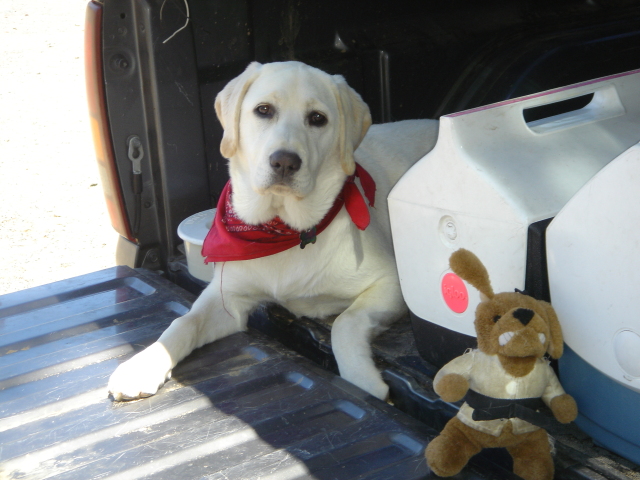QuestionI am dogsitting two new dogs. One is a Labradoodle, the other is a 4 year old
yellow lab, both females. The yellow lab Annie, used to have a chocolate lab
sister, who passed away a couple of years ago. The new dog, Darla, is 10
months old. They have had both girls since pups. They are both great dogs,
except, Annie, the 4 year old, is terrible on the leash as well as listening,
while Darla, the pup, is much easier to handle. I know Annie is jealous, and
gets equal attention, (a little more by me, had a choc lab pass away almost 3
years ago) but they both get along really well. For Annie, the owners have
tried choke collar and the what I call torture Sprenger collar, ( I know it is
humane) Question is, the owners have only used it on her one time. I am only
here a few days I feel as if her training should be kept up by them, using this
particular collar. Is there anything I can do, any tricks to keep her from
walking me and getting out of her collar, or should I try the new collar, not
knowing what they really do as far as training and discipline is concerned.
Thank you!
Answerinch collar. I don't like them, have never used them, and am not sure just how. However awful they look, they are widely used, and if fit properly, they are fairly safe. They are a great favorite of professional dog trainers. Note, I am not in awe of professional dog trainers. Too many of them are still using old techniques such as the prong collar.
I am a little disappointed the dog owner didn't give you a little instruction. It is possible they have been told the pron collars are widely used and figure everybody is familiar with them. They do work much the same as the common choke collar. When the dog pulls, give the leash a pop. It is like throwing a stone backwards.
Easier dogs will give up their pulling with a few good snaps of the leash combined with a stern "Bad dog!". You can work up to forceful corrections with the leash doubled up in both hands and your whole body behind it. But you don't want to use any more force than you need. One gentle technique I like is to just stop when he pulls. He wants to go. If you move forward when the leash is slack, and stop when he pulls, he should quickly figure out the only way to get to go, is not to pull. This is about teaching him not to pull, not getting somewhere. The man that taught it to me said "If in a half hour you haven't made it out to the front walk, fine, you have taught him a lesson. Pulling the dog backwards is a good technique too.
While I agree you should follow the same methods the owners use, if they didn't explain them, you will just have to do the best you can. The above will teach the dog not to pull for you. Dogs quickly assess any handler and take advantage of those not using good techniques. There is wide disagreement and very strong opinions on what is the best technique. Many people continue to use what they were taught, feeling it is the best way. Perhaps I fall into that too, but my teachers are the highly experienced staff at a large dog guide school. They are constantly testing and evaluating different techniques, and passing the best on to those raising puppies for them.
If the pulling the dog backwards technique doesn't work for the dogs in the dog guide program, they switch to a head collar. You might mention them to the dog owners. The leading brands are Promise, Haltie, and Gentle Leader. They have a strap going around the dogs nose looking something like a muzzle. They work by pulling the dogs head around. No other way gives you such great control with so little force. The prong collar is now a dangerous relic of value only for its macho looks. Do not consider using one without hands on instruction from somebody with plenty of experience with them.
Where the prong collar needs hands on fitting and training by somebody that knows what they are doing, most people can make proper use of a head collar just by reading the instructions that come with it.

 about my female dogs height
Question
sitting on table
i got a fawn coloured female
about my female dogs height
Question
sitting on table
i got a fawn coloured female
 constant puppy barking
Question
My 13 week old female yellow lab barks consta
constant puppy barking
Question
My 13 week old female yellow lab barks consta
 11 week old chocolate lab
Question
11 week old lab
We recently got a chocolate la
11 week old chocolate lab
Question
11 week old lab
We recently got a chocolate la
 Diet
Question
Lucy and her toy
My yellow lab is about 1 year
Diet
Question
Lucy and her toy
My yellow lab is about 1 year
 sniffing female owner
Question
Jack
Hello, thank you so much for taking the t
sniffing female owner
Question
Jack
Hello, thank you so much for taking the t